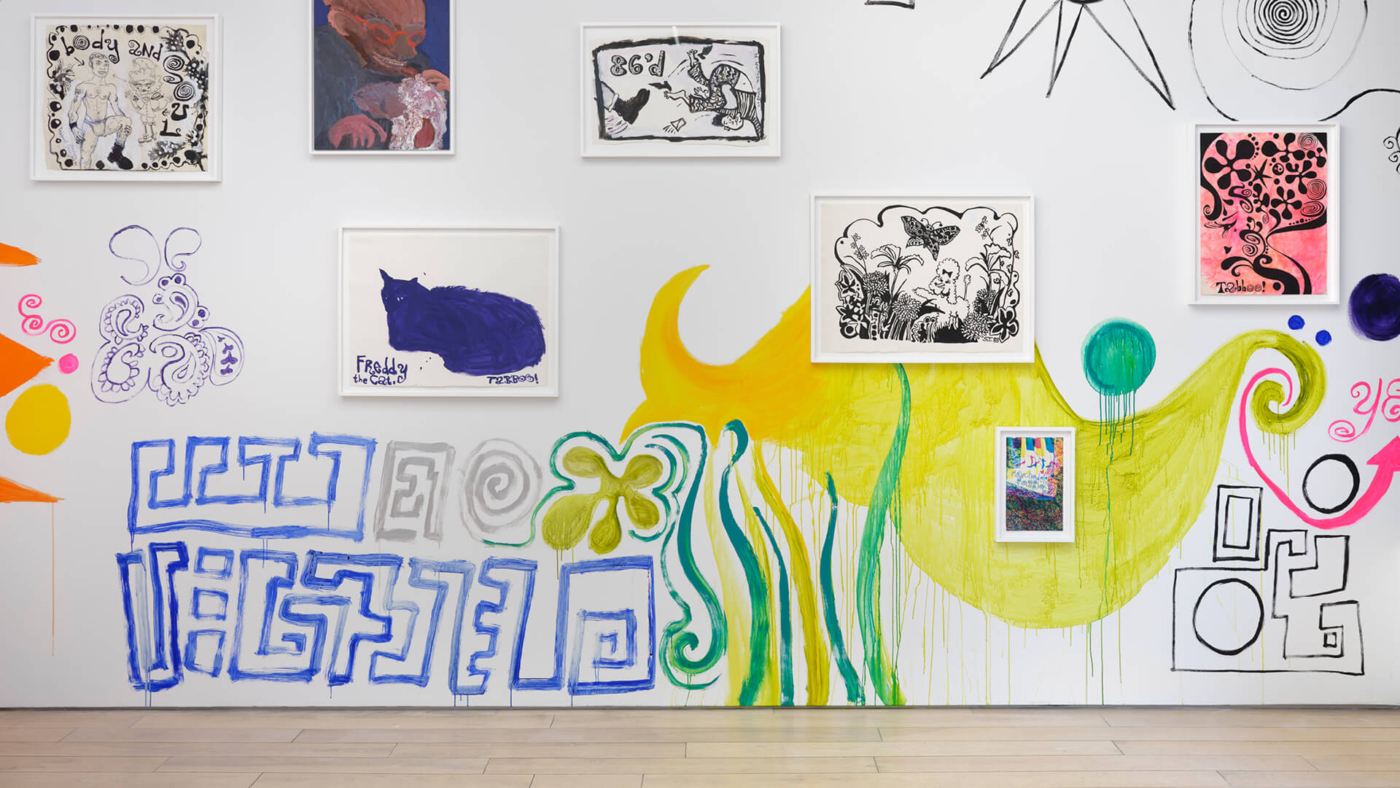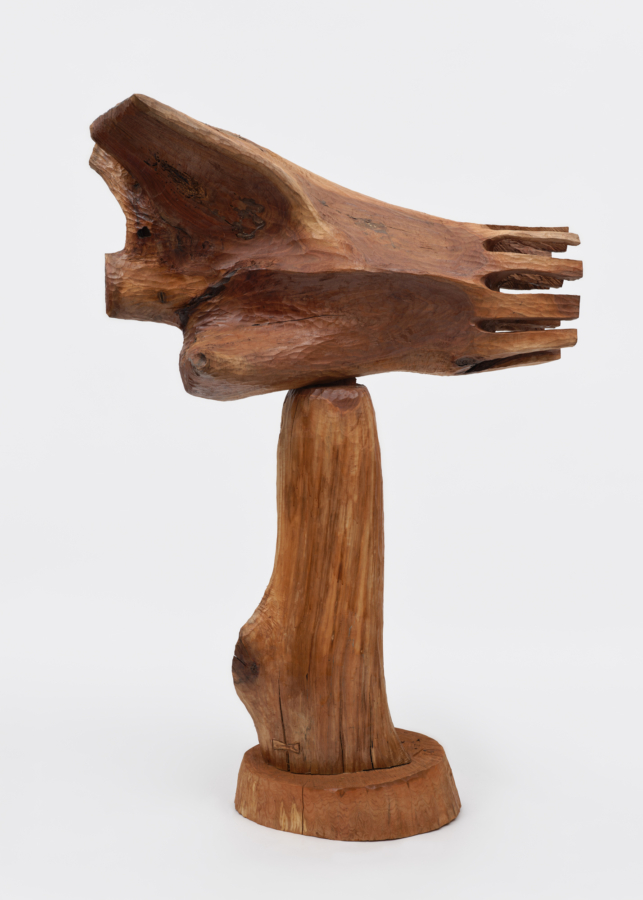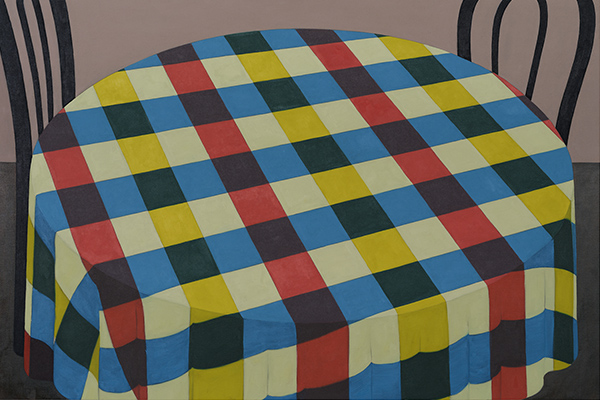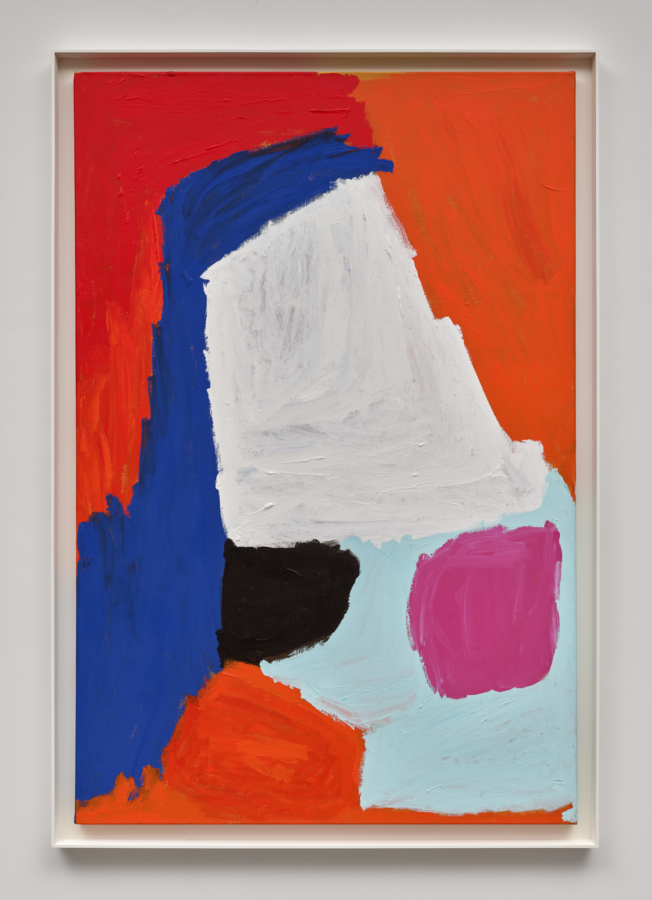
January 24, 2025
Download as PDF
View on Stir World
This ongoing exhibition reveals New York-based Tabboo!’s tenacious mark-making in performance, painting and drawing spanning more than four decades.
In 1982, Stephen Tashjian (b. 1959) moved from Boston to New York’s Alphabet City in the East Village, quickly taking the moniker Tabboo! as his drag name. Performing in clubs across the then-gritty Lower Manhattan neighbourhood, Tabboo! assumed a glamorous, larger-than-life personality as an elegantly wigged and gowned performer in venues like the Pyramid Club, the Mudd Club and the Palladium. Those iconic places are all gone now, as are many of Tashjian’s contemporaries in art, performance and life. But Tashjian (and Tabboo!) has persisted over the last four decades, steadily creating paintings, drawings and experiences that celebrate or commemorate his everyday life and the people and things that shape it.
Early Works, on view at Karma’s two East Village locations as well as Gordon Robichaux through February 28, is the first showcase that fully contextualises his multi-faceted practice within the aesthetically polyphonic 1980s. In the paintings and drawings collected here, which date from 1980 to 2005, with a site-specific mural created just before the exhibition opened on January 8, the mark-making figures serve as an impulse to document.
This is illustrated in the site-specific mural at 172 East 2nd Street. Created just before the show opened on January 8, it is composed of Tabboo!’s signature swirling, zigzagging and almost doodle-ish lexicon of motifs, including spirals, stars, suns and interlocking hieroglyphic-like angular patterns. Spanning two walls in this small gallery, bright purples, orange, chartreuse and hot pinks imbue these motifs with optimism; the mural is punctuated with framed drawings and paintings (for example, Orangey Pink Lady, 1987, or Body and Soul, 1988) from the mid to late 1980s, as Tabboo! was just beginning in New York. The nascent East Village scene—a hotspot for campy and cerebral performance art alike—proved to be fertile ground for the histrionic Tashjian.
A puppeteer as a child in central Massachusetts, Tabboo! attended MassArt at a time when artists like Nan Goldin, Gail Thacker, Jack Pierson, Mark Morrisroe and Pat Hearn were active in Boston. It was also in Boston that Tabboo! got his start in drag as one half of the Clam Twins, a duo with Morrisroe. The late 1970s and early 1980s in Boston were a particularly fervent moment for artists working with photography, video, performance and installation to grapple with the intersection of identity, persona and portraiture. Like Tashjian, many of this group were queer and flocked to New York after art school, continuing to make work together in the East Village and blurring the line between art and life.
With Tabboo!’s high-keyed palette and loose, guileless brushwork directly on the wall, this 2025 mural seems to exhibit a sincerity and hope (or even innocence) that Tabboo! and his friends must have felt in moving to the city. A smiling sun presides over the scene, while “yes” and “2025” are written in a flowery script; Tabboo!’s strokes are intentionally imprecise, as if he is in a rush to say what needs to be said. The mural’s contemporaneity starkly contrasts with the 1980s works placed throughout, despite the shared teenage-dreaming aesthetic and conceit (the drawings depict, among other things, scribbly swirls, a poodle, a cat, an underwear-clad male). The juxtaposition of time between the mural and drawings demonstrates not only Tabboo!’s perseverance amidst multiple health epidemics (AIDS, COVID-19) and the wholesale transformation of the East Village from gritty to gentrified but also his commitment to documenting his experiences through stylised, performative gestures.
The presentation’s second location is about a block from the first, and the short walk between the two enables viewers to take in some of the concrete and metal textures as well as palimpsests of graffiti and advertisements that make this part of the city. How has it changed since Tabboo! arrived, making his visible mark in an underground scene as AIDS ravaged his community? This question lingers as one enters the second site, which more elegantly presents the nuanced relationship between his performance, painting and drawing practices. Gesture unites them, and the placement of small black-and-white drawings and posters promoting performances (mostly at the Pyramid, where Tashjian first became Tabboo!) are placed in a spacious cloud-like formation opposite the large-scale, colourful Wigstock Backdrop (1990), which served as scenery for the annual end-of-summer fete for the gay and queer community throughout the 1980s and 1990s. Stylised busts of performers with extravagant hairstyles in blue, green, purple, fire engine red or bright yellow colours appear throughout the composition, anchored by “wigstock” written in Tabboo!’s signature curvilinear, snaking script. The right of the composition devolves into an almost pure abstraction of purples, pinks and reds dotted with anthropomorphic shapes in red, yellow, and black. “Think Love. Tabboo!” is vertically written in all caps along the right edge, as if the artist has tagged the painting like a graffiti artist might; it’s like Tabboo! needed to mark that he was here as so many of his friends and generation perished around him.
Paintings like Guido (1986), installed between Wigstock Backdrop and the monochrome drawings, or Jane is Sexy (1981) and Classical Beauty (1984), both displayed in the gallery’s backroom, are not only evidence of Tabboo!’s enduring ebullient, gritty romantic style but also of his dedication to commemoration. Guido documents an everyday scene as something of a kitchen still-life with cans of crushed tomatoes, the hint of a flower and the heads of cartoon characters. Jane is Sexy and Classical Beauty more obliquely observes and records people and a zeitgeist. In both, Tabboo! included the boxy, curvilinear pattern amidst his whirling, exuberant brushwork, grappling with abstract expressionism’s legacy and the prevalent Neo-Expressionism of the day (he was friendly with Jean-Michel Basquiat). The teeth in the latter especially recall Willem de Kooning’s Woman I (1950-52), while the text in the former evinces the influence of postmodernism’s play with language. As in Guido, these paintings seem to remember a particular time, person and place.
Throughout Early Works, Tabboo!’s time and place in New York figures as a character in his works as much as his friends, pets and fellow performers populate his work. And if his first decade is something of a persona in Early Works, it is also honoured not nostalgically but almost anthropologically, as an era that, though vanished, continues to shape and condition our present.



